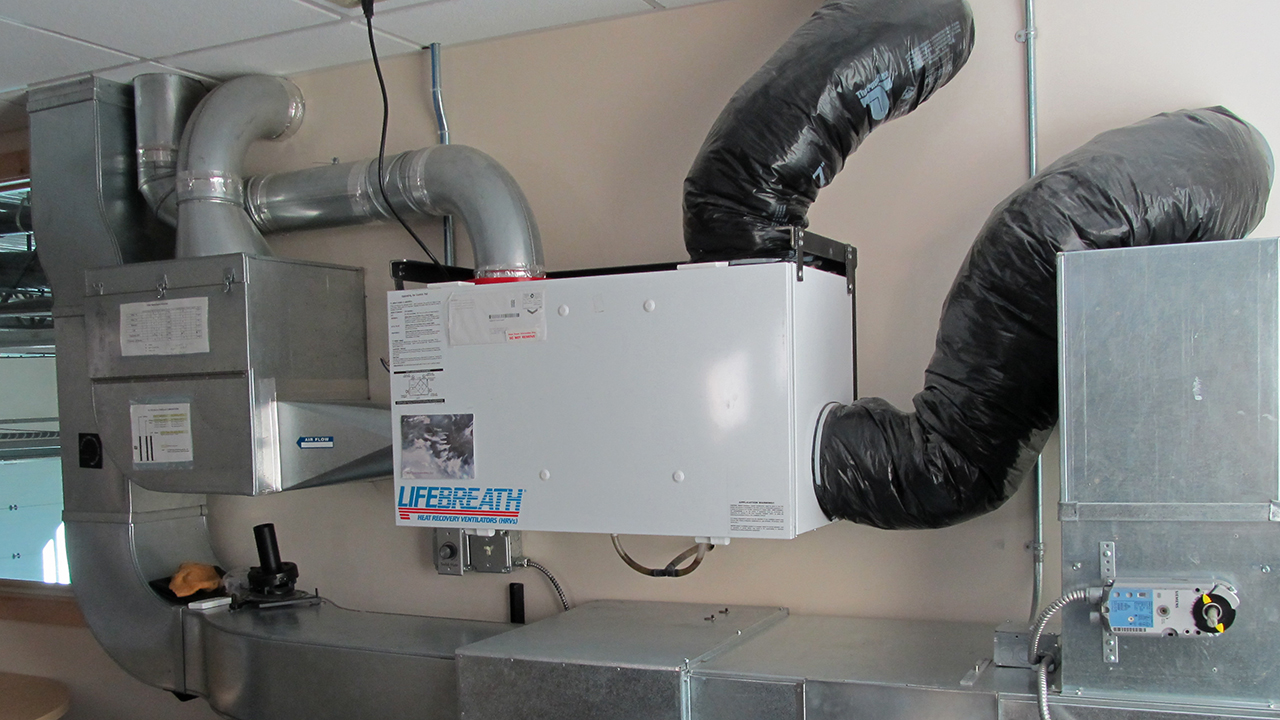The Next Generation of HRV in Energy-Efficient Home Design
Wiki Article
The All-Inclusive Guide to the Uses of Heat Recovery Ventilation in Modern Buildings
Heat Recovery Ventilation (HRV) systems stand for a considerable development in developing modern technology (HRV Heat Recovery Ventilation). They give a technique for exchanging stagnant interior air with fresh exterior air while lessening power loss. This technique not only enhances indoor air top quality but additionally adds to energy efficiency in both domestic and commercial structures. Recognizing the numerous applications and advantages of HRV can expose its critical function in contemporary design and sustainability efforts. The ramifications of this technology deserve checking out furtherUnderstanding Heat Recovery Ventilation Solutions

Although many modern buildings focus on energy effectiveness, comprehending warmth healing ventilation (HRV) systems is essential for maximizing indoor air quality and reducing power consumption. HRV systems function by transferring warm from stale interior air to inbound fresh air, properly keeping comfortable indoor temperature levels while reducing power loss. These systems consist of a heat exchanger, fans, and ductwork that help with the blood circulation of air. Throughout winter months, HRV devices record and reuse heat from the outgoing air, while in summertime, they can aid cool down incoming air. By continuously trading air, HRV systems likewise reduce humidity and the focus of indoor pollutants. Correct installation and maintenance of HRV systems are crucial for their performance and efficiency in improving overall structure performance and comfort.
Advantages of Heat Recovery Ventilation
Heat recovery ventilation systems offer many advantages that enhance both energy effectiveness and interior air high quality in modern-day structures. By recording and reusing power from exhaust air, these systems considerably decrease heating and air conditioning prices, bring about reduced energy usage. They preserve a stable flow of fresh outside air, lessening the threat of indoor air toxins and allergens. This continual exchange helps regulate moisture levels, stopping mold growth and making certain a much healthier living atmosphere. Furthermore, HRV systems add to sustainability goals by reducing overall carbon footprints. Their ability to enhance ventilation without giving up thermal comfort makes them an important addition to modern structure design, promoting both financial and environmental benefits.Applications of HRV in Residential Buildings
As house owners significantly prioritize energy effectiveness and interior air high quality, the applications of heat recuperation ventilation (HRV) systems in property buildings have actually ended up being a lot more widespread. HRV systems are particularly advantageous in securely secured homes, where keeping fresh air circulation is crucial for stopping moisture build-up and indoor toxins. They properly transfer warm from outward bound stagnant air to incoming fresh air, lowering power prices related to heating and air conditioning. Furthermore, HRVs can improve comfort degrees by regulating humidity and temperature level. They are additionally versatile for numerous residential designs, HRV Heat Recovery Ventilation including single-family homes and multi-unit buildings. Overall, incorporating HRV systems supports sustainable living methods while making sure a healthier interior setting for residents.HRV in Business and Industrial Setups
In industrial and commercial setups, the implementation of warmth recovery ventilation (HRV) systems has ended up being increasingly critical for enhancing energy performance and maintaining air top quality. These systems properly move warmth from exhaust air to incoming fresh air, reducing the demand for additional heating or cooling. This not just reduces energy prices yet also adds to sustainability campaigns. Industries such as production, warehousing, and office structures benefit considerably from HRV systems, as they help control temperature level and moisture degrees, making sure a comfy and efficient setting. HRV systems help in getting rid of pollutants and excess wetness, enhancing interior air high quality. As laws around air quality end up being more stringent, the adoption of HRV innovation is likely to expand, making it a vital component of modern industrial and industrial framework.Future Patterns in Heat Recovery Ventilation Technology

Often Asked Concerns
Exactly How Does Heat Recovery Ventilation Influence Indoor Air Quality?
Heat recovery ventilation significantly boosts indoor air high quality by constantly exchanging stale interior air with fresh outdoor air while recovering energy. This procedure decreases toxins, preserves excellent humidity degrees, and ensures a healthier setting for occupants.Can HRV Systems Be Set Up in Existing Structures?
HRV systems can without a doubt be installed in existing structures. Retrofitting may require adjustments to ductwork and ventilation formats, however it significantly boosts power effectiveness and indoor air high quality, making it a practical option for older frameworks.What Upkeep Is Required for HRV Solutions?

Exist Details Climates Where HRV Is More Reliable?
Heat recovery ventilation systems are especially reliable in climates with significant temperature differences in between periods. These systems enhance energy performance by recuperating warmth from exhaust air, making them perfect for both cool and reasonably warm environments.How Do HRV Systems Affect Power Expenses?

Report this wiki page